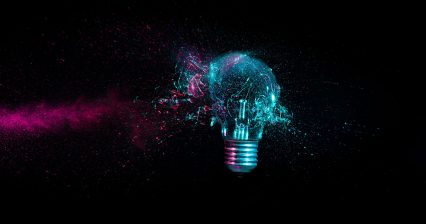You may have heard the terms ‘GIF’ and ‘infographic’ but what exactly are they and how could they help your B2B social media marketing efforts? Let’s find out.
What is a GIF?
A GIF is an animated image that plays on a loop. Used to illustrate or emphasise a point on social media or online, they’re often very short clips or images from popular movies or TV series but can be anything. For example, one of the earliest GIFs to go viral was the dancing baby.
The term GIF stands for Graphical Interchange Format. They were introduced back in 1987 (that’s before the world wide web even existed) by CompuServe as a way of animating images in a reduced, and therefore more usable, file size.
Traditionally, GIFs were soundless but these days anything is possible and GIFs with audio are used to promote music, movies, and more. According to GIF search engine, Giphy, 700 million users use their site each day to send 10 billion GIFs.
As to how to pronounce the word GIF, it’s the ‘you say to-may-to, I say to-mah-to’ debate of the software world. Some people say ‘jif’, others say ‘gif’. However, according to Steve Wilhite, who invented the GIF, the correct pronunciation is ‘jif’.
When should you use a GIF?
As GIFs are a quick, easy, and fun way to communicate a message, they’re a great addition to a brand’s B2B marketing strategy across social media.
Whether used to promote a product, event, or brand, GIFs are a visual shorthand for getting your message across – particularly when people only read 28% of words on a website.
Their small file size means that GIFs can be easily used online without losing image quality and your choice of GIF can go some way to demonstrating your brand’s tone of voice.
No matter who you’re targeting, everyone is used to the format and, perhaps most importantly, the end user doesn’t have to do anything (e.g. choose to press play) for them to work. With a GIF, the message you wish to communicate plays automatically on a loop.
What is an infographic?
An infographic is ‘a visual presentation of information in the form of a chart, graph, or other image accompanied by minimal text‘. They’re often used to make a complex subject easier to understand.
Although infographics may seem like a relatively new phenomenon, the concept of visualising data dates back as far as the 11th century, to demonstrate how planets move through the sky.
The use of bright colours, eye-catching illustrations, different-sized fonts, and bold text can turn dry stats into fun facts.
In fact, information displayed in a colourful, visual manner has been shown to increase attention spans by 82%, boost reading comprehension by 70%, and increase retention of information by 78%.
When should you use an infographic?
When you want to communicate your products, services, or the benefits of using your company, infographics are a persuasive way of representing a lot of data in a visually appealing manner.
As the research shows, infographics are an impactful way of grabbing your target audience’s attention in an easy-to-digest format. They’re also an effective way of positioning your company as a thought leader or the go-to choice for your sector.
Further benefits of infographics are that they’re SEO-friendly (as they’re packed full of keywords and phrases that your customers will be searching for) and much more likely to be shared than plain text listing the same data.
Want striking visuals that make a GIF-ference? We specialise in impressive visuals that leave lasting impressions. Find out more on our Creative & Design page or drop us a line for a chat.



